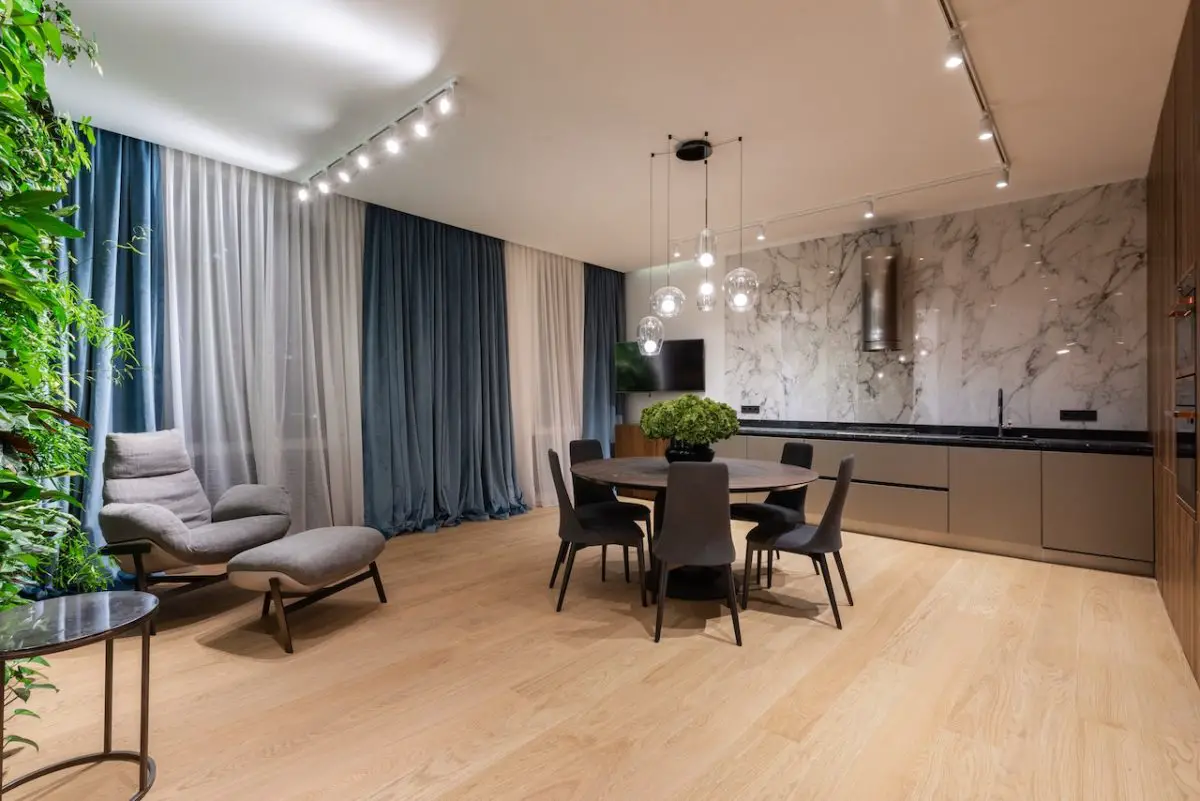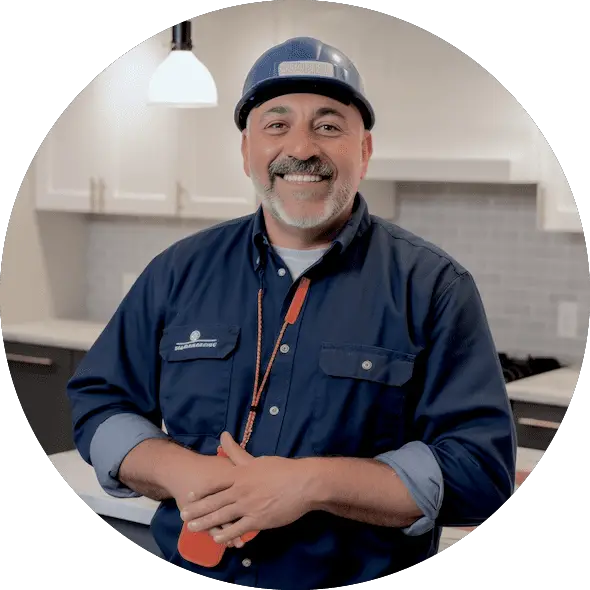If you want to install or replace your kitchen’s ducted range hood but don’t know where to begin, this article will provide you with the information you need to complete the job.
In this post, you will learn whether you can install a ducted range hood, how to install a ducted range hood, and when to call a professional to have the best air quality at home.
Can I install a ducted range hood myself?
Yes. However, it will be difficult if you attempt to do it alone. The typical homeowner should be capable of putting up a hood alone. You should always have someone help you install a ducted range hood. Of course, you may always call in a specialist to help with the installation or serve as a contractor if you’re having trouble.

COSMO COS-63190S Wall Mount Range Hood

COSMO COS-63190S Wall Mount Range Hood
How to install a ducted range hood?
If you are ready to install your new ducted kitchen range hood, below are all the steps required for this task, along with some materials, supplies, and special tips to get you going in the right direction.
Plug it in & verify the operation
Unbox their range hood, set it up on a tabletop, and plug it in before attempting to install it in their kitchen. Then, verify that the switches for the lights and fans are operational.
Check for any missing pieces. Before you take the time and effort to install anything, you should check it thoroughly for problems and missing pieces.
Remove any transparent tape or packing off the range hood while you’re at it. People sometimes attribute a bluish hue to LED lights when, in fact, it is only blue packaging tape covering them.
Take down the old hood, if there is one
Take off the old range hood if you already have one. Once the range hood is unplugged, you may unscrew the wire nuts and remove the cables. Next, assist you in loosening the range hood’s mounting screws by having a second person hold the heavy appliance while you work with a screwdriver.
Then, remove the old range hood from the screws and lay it aside with care. The old range hood should be moved outdoors, to a shed, or to the garage, so it is out of the way.
Remove the knockouts and mark the vent holes
A modern range hood will always have metal knockouts for the wires and vents. Using the hammer and screwdriver, remove the knockouts, and then position the hood against the wall to be used as a guide to making marks for the vent holes.
The vent holes may be marked on certain range hoods with a paper template that comes with the hood. However, having a second person hold the range hood steady while you mark the vent holes may greatly enhance the precision of your work if your range hood does not come with a template.
Cut vent holes and drill locator holes through an exterior wall
If you want to put the vent in the wall, you first need to cut a tiny hole to check out the space behind it. If you discover any pipes or wires, it’s best to call the experts. Then, using a hole saw a bit in a drill or a reciprocating saw, create a passageway for the wires and the air vent.
Next, look at the area where the vent will go outside and ensure there are no studs, pipes, or cables before installing the ducting. If these things get in the way, the ducts might have to be placed differently.
The house’s outer walls may be drilled through with a long drill bit to place locator pins. These holes mark the edges of the vent hole, which makes it easier to make a clean, tight path for the vent to the outside. You must read this to know how to drill through a vinyl wall.
The vent hole’s four corners should each have numerous locating holes drilled in them. With a ductless range hood, you only need to make a small hole in the wall for the power cord.
It may be simpler to cut the hole through a square piece of PVC trim and attach it to the outer wall if the wall is paneled or uneven.
Use the locator holes to cut a vent hole in the exterior wall
Go outside and look for the locating holes in the house’s siding. Connect the locating holes with a pencil and then use an electric reciprocating saw to cut along the drawn line. This is an easy process if the house has siding. The method is more involved if the outer wall is made of brick.
First, make sure the vent will fit by drawing a rough outline using a pencil or marker. Then, drill a hole in the brickwork every inch or so along the shape of the vent hole. Next, make a clean aperture for the vent by chipping away the brick and mortar between the holes using a hammer and cold chisel.
Connect the duct
Pull the duct wall cap through the vent opening and measure the duct length to ensure it reaches the range hood. Picking up a duct extension could be necessary if the existing ducting is insufficient.
Apply sealants and calk
Caulk should be used to seal the outside of the vent hole to prevent rodents, insects, and other critters from entering through it. First, attach the duct’s wall cover using screws, then double-check the caulking’s effectiveness by inspecting the outside of the building.
Mount the range hood
After the ducting has been set up, the range hood may be attached to the ceiling or wall. While you use a drill to fasten the range hood’s mounting bracket and screws, have a helper hold the hood in place.
When using the brackets to attach the range hood to the wall, all of the screws should be snugged down securely. But only half of the screws need to be put in when attaching the hood to cabinets that are already there. Using a nail set and a hammer to make tiny pilot holes in the tiles of a wall is an option. Drilling into a tile will be safer if you do this beforehand.
Run wires to the range hood
If you’ve just taken out an old range hood, the power to the electrical lines should have been cut off automatically; if not, you need to go to the breaker box and flick the switch for the range hood.
The new range hood may be installed using the cables from the old one; all that needs to be done is to connect them as per the instructions. The standard for new installations is to run a wire from a nearby outlet or junction box to the range hood. Then, remove the insulation from the wires with a wire remover before plugging them into the range hood.
Wire connectors should be used to attach the white wire to the white lead, the black wire to the black lead, and the green grounding wire to the green lead of the light fixture. Even though this is the most common way to set up a range hood, you should double-check the instructions to ensure it is wired correctly.
Turn on the power and test the range hood.
Before replacing the range hood’s electrical cover, ensure the wires can move freely inside the wall without stressing the electrical connection. First, you need to switch on the electricity at the breaker panel, and then you may install the range hood’s filters and grease guard. Next, check the outside duct to ensure the air, the light, and the fan are properly vented.
Supply:
- Range Hood
- Wall Cap
- Ducting
- HVAC Foil Tape
Tools:
- Drill
- Drill Bits
- Caulk Gun
- Wire Stripper
- Oscillating Tool
- Pencil
- Leveler
- Tape Measure

When to call a professional?
Installing a ducted range hood may seem daunting. Consider hiring an expert installer if this is the case. Read our guide on how to find a contractor to install your vent hood to find a great installer.
If you want even more tips and insights, watch this video called “How to Install a Range Hood | The Home Depot with @This Old House” from The Home Depot YouTube Channel.
A video called “How to Install a Range Hood | The Home Depot with @This Old House” from The Home Depot YouTube Channel.
Frequently asked questions (FAQ)
Do you still have questions? Below are some of the most commonly asked questions about installing ducted range hoods.
What is a range hood?
Most modern kitchens will have a range hood. These fans are mounted above the range or stove and are designed to remove fumes, smoke, odors, and grease from the air.
How much does it cost to install a ducted range hood?
Price is one of the most important things to consider when deciding whether to install the range hood or hire a pro. HomeAdvisor says the average price to have a range hood professionally installed is about $750. This price ranges from $400 to $1,500.
Do range hoods have to be vented outside?
A range hood may either exhaust the stale air outdoors or recycle it back into the room. When using a range hood with a vent, ensure the vent goes outside and not into an attic or crawlspace where mold could grow.
How high should a range hood be?
There is no universally accepted minimum height for a range hood. Therefore, the distance from the floor to the underside of the appliance varies widely. It’s important to note that different items have different recommended installation depths; some may go in at only 20 inches, while others need to be set at 36. The installation manual for the range hood is the best way to figure out the right height to mount the appliance.
Conclusion
After reading through the step-by. Blog, you should have a clear idea about installing a ducted vent hood. You can always contact a professional if you feel it’s too much for you.
This article covered whether you can install a ducted range hood, how to install one, and when to call a professional. Here are some key takeaways:
Key takeaways
- Installing a range hood yourself saves you the cost of hiring a professional.
- DIY experts who don’t want to spend money on a licensed appliance technician may understand the process of installing a range hood.
- If you need to install ducting through the side of your home or the roof and are uncomfortable doing it, you should contact a construction contractor.
- The amount of cubic feet per minute (CFM) is a useful indicator of how often you should clean the filter in your exhaust fan. More cfm means a more potent hood.
- Make sure the roof vent extends beyond the attic and into the outside air if you want to use that option.
So, do you know how to install a DIY ducted range hood? And did I cover everything you wanted to know? Let me know in the comments section below (I read and reply to every comment). If you found this article helpful, check out my full blog for more tips and tricks in your kitchen. Thanks for reading, and stay safe.















